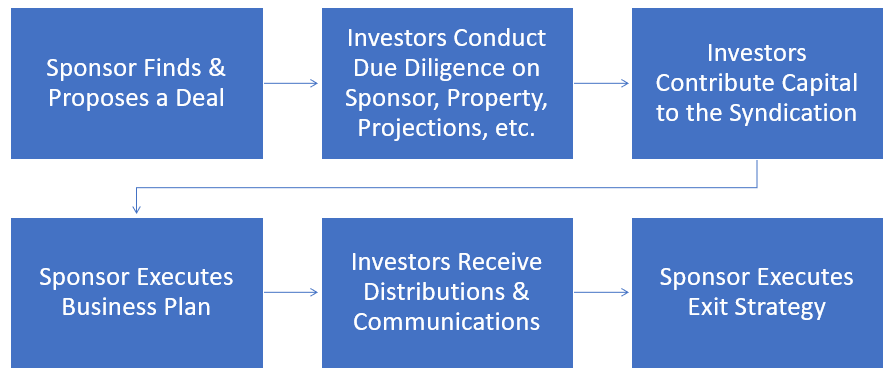Group Investing
This is when a group of individuals or entities pool their capital and collectively invest in a particular asset, project, or venture. This approach allows participants to share the risks and potential rewards of the investment. Regardless if you’re investing as a group (group investing) or investing by yourself (solo investing), it’s important to understand the similarities, differences, advantages, and disadvantages with each.
Group Investing
Lower Entry Costs
Diversification
Access to Knowledge & Expertise of Others
Increased Buying Power
Accessibility to Larger Investments
Shared Costs & Expenses
Networking Opportunities
Personal Risk Mitigation
Learning from Real Life Experiences
Solo Investing
Higher Entry Costs or Down Payments
Less Diversification
Full Control Over Investment
Quicker Decision Making
Sole Profits &/or Sole Losses
Resource Constraints
Time-Consuming
Bear Full Risks &/or Full Rewards
Learning from Real Life Experiences
General Overview of Buying an Investment Property
Note: This flowchart provides a general overview of the process, and each step may involve more specific tasks and considerations.
As a solo investor, you take on the full responsibility for every step of the process. Even if you hire people to handle certain tasks, you are still ultimately responsible for the overall success of the investment. While this is one way to achieve your financial goals, it is certainly not the only.
The Power Pool Fund takes the Group Investing approach. We leverage members unique insights, talents, expertise, and resources to invest and achieve potentially exponentially greater results than what we may be able to do individually.
“If you want to go fast, go alone; if you want to go far, go together”
– African Proverb
Commercial Syndications
This is a partnership where multiple investors contribute their capital & expertise to collectively invest in larger & potentially more profitable real estate assets. These assets can include commercial properties like apartment complexes, shopping centers, medical office buildings, and more. The typical minimum investment is anywhere from $50,000 - $100,000. While there are many benefits to investing in these types of assets, it’s important to understand both the advantages and drawbacks of investing in commercial syndications.
Syndication Investing Pros
Real Estate Ownership
Passive Income
Access to Larger Deals
No Landlording Headaches
Higher Potential Returns
Tax Benefits & Advantages
Professional Expertise
Limited Liability
Hands-Off Investments
Syndication Investing Cons
Higher Investment Minimums (Typically $50k-$100k min)
Accreditation Status
Mid to Long Term Commitment
Illiquid Investments
Limited Control
Potential for Capital Calls
Sponsor Related Risks
General Overview of Investing in a Syndication
Note: This flowchart provides a general overview of the process, and each step may involve more specific tasks and considerations.
Investing in commercial syndications is a truly passive way to put your money to work for you and take advantage of all the benefits that real estate investing has to offer. The bulk of your efforts is in the vetting & due diligence process to decide if you want in on the opportunity.
With the Power Pool Fund, we perform this process together and then each member decides if they want to participate in the offering. For those that do, we collectively pool our funds and invest for passive returns.
- There Is Power In Pooling Our Funds




